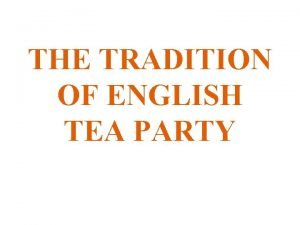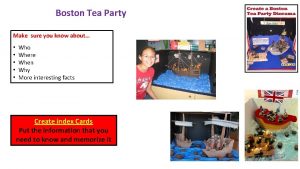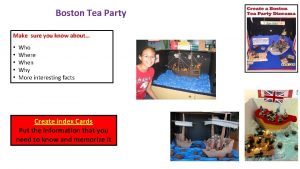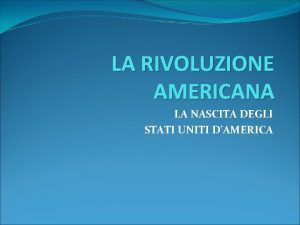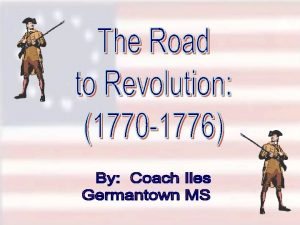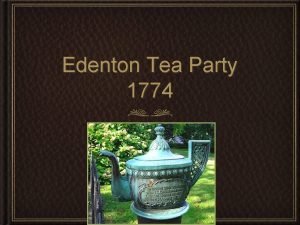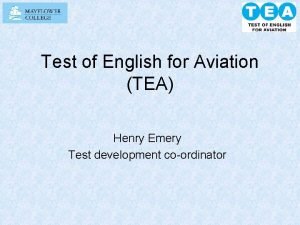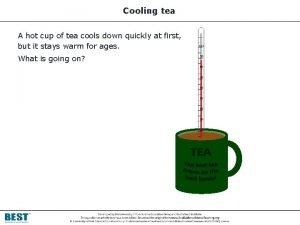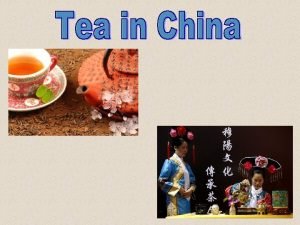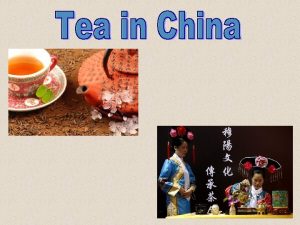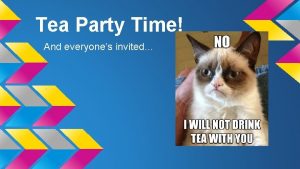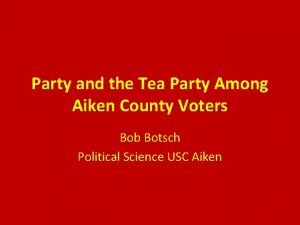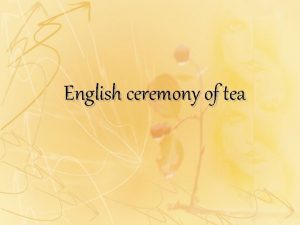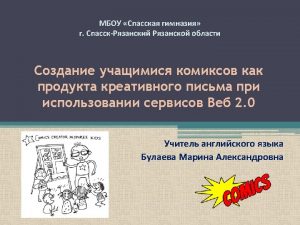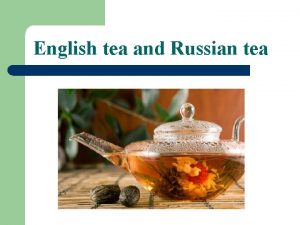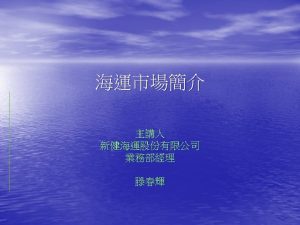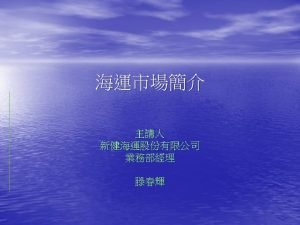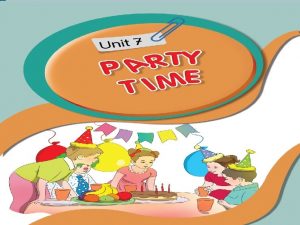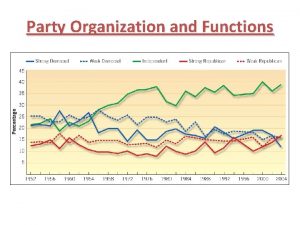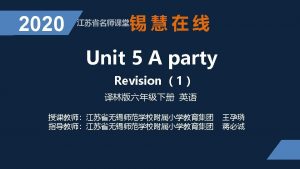THE TRADITION OF ENGLISH TEA PARTY There are






























- Slides: 30

THE TRADITION OF ENGLISH TEA PARTY


There are four types of tea most commonly found on the market: • • • black tea oolong tea green tea white tea pu-erh tea

The nutrients such as: • • Calcium Zinc Vitamin B 6 Niacin

The history of tea 17 th Century 1600 - Queen Elizabeth l (1533 -1603) granted permission for the charter of the British East India Company 1662 - King Charles II and Portuguese Infanta Catherine de Braganza were confirmed tea drinkers. 1663 - The poet and politician Edmund Waller (1606 -1687) wrote a poem in honor of Queen Catherine for her birthday crediting her with making tea a fashionable drink amongst courtiers. 18 th Century Queen Anne (1665– 1714) chose tea over ale as her regular breakfast drink. Anne's character was once portrayed as a tea-drinking. 19 th Century According to legend, one of Queen Victoria's (1819 -1901) ladies-in-waiting, Anna Maria Stanhope (1783 -1857), known as the Duchess of Bedford, is credited as the creator of afternoon teatime.

MADAME DE SÉVIGNÉ (1626 TO 1696)

QUEEN ELIZABETH I (1533 -1603)

KING CHARLES II (1630 -1685)

EDMUND WALLER (1606 -1687)

QUEEN ANNE (1665– 1714)

QUEEN VICTORIA (1819 -1901)

AFTERNOON TEA

ENGLISH “TEA CEREMONY”

To conduct an English tea ceremony one needs certain: • table appointments • snacks for tea • the ability to manage tea during the process of tea-drinking

TABLE APPOINTMENTS

SNACKS FOR TEA

TEA DRINKING

Tea Etiquette: • To hold the teacup • To stir your tea • Milk & Lemon

TEA ETIQUETTE


Thomas Twining

TWININGS TEA


2005 • During 2005, Twinings introduced its first generic, non-speciality tea, under the brand “Everyday Tea”.

2006 • In 2006 they started producing a tinned chocolate drink, and in 2007 they also launched a selection of tinned coffees onto the market.


April 2008 • Twinings announced their decision to close the Nambarrie plant. Twinings said it needed to consolidate its UK manufacturing operations in the face of increasing global competition.

November, 2009 • Twinings announced the planned closure of its North Shields plant and cuts at its Andover facility. A new plant is being built in Poland to supply the European markets. Union bosses said the North Shields factory was “very productive” and accused company management of putting profit before job security.

Tea in literature • • Lu Yu “Cha Ching” or “The Classic of Tea” Henrik Ibsen “Love’s Comedy” Agnes Repplier “To Think of Tea” Vaclav Havel “Letters to Olga, June 1979 Septmber 1982” • Marcel Proust “Un amour de Swann” (“Swann's Way” or “Swann's Love”) • Soshitsu Sen XV “Tea Life, Tea Mind” • Wallace Stevens

The End
 Mikael ferm
Mikael ferm English tea tradition
English tea tradition Revolutionary war diorama
Revolutionary war diorama Diorama boston tea party
Diorama boston tea party Chapter 13 eyes were watching god
Chapter 13 eyes were watching god Boston tea party diorama
Boston tea party diorama Bostonians paying the excise man
Bostonians paying the excise man Boston tea party treccani
Boston tea party treccani Boston tea party stamp
Boston tea party stamp Boston tea party
Boston tea party Edenton tea party date
Edenton tea party date Third party and fourth party logistics
Third party and fourth party logistics Tea test aviation
Tea test aviation The act of cooling tea
The act of cooling tea Hình ảnh bộ gõ cơ thể búng tay
Hình ảnh bộ gõ cơ thể búng tay Bổ thể
Bổ thể Tỉ lệ cơ thể trẻ em
Tỉ lệ cơ thể trẻ em Gấu đi như thế nào
Gấu đi như thế nào Tư thế worm breton
Tư thế worm breton Chúa yêu trần thế
Chúa yêu trần thế Môn thể thao bắt đầu bằng từ chạy
Môn thể thao bắt đầu bằng từ chạy Thế nào là hệ số cao nhất
Thế nào là hệ số cao nhất Các châu lục và đại dương trên thế giới
Các châu lục và đại dương trên thế giới Cong thức tính động năng
Cong thức tính động năng Trời xanh đây là của chúng ta thể thơ
Trời xanh đây là của chúng ta thể thơ Cách giải mật thư tọa độ
Cách giải mật thư tọa độ Làm thế nào để 102-1=99
Làm thế nào để 102-1=99 độ dài liên kết
độ dài liên kết Các châu lục và đại dương trên thế giới
Các châu lục và đại dương trên thế giới Thể thơ truyền thống
Thể thơ truyền thống

